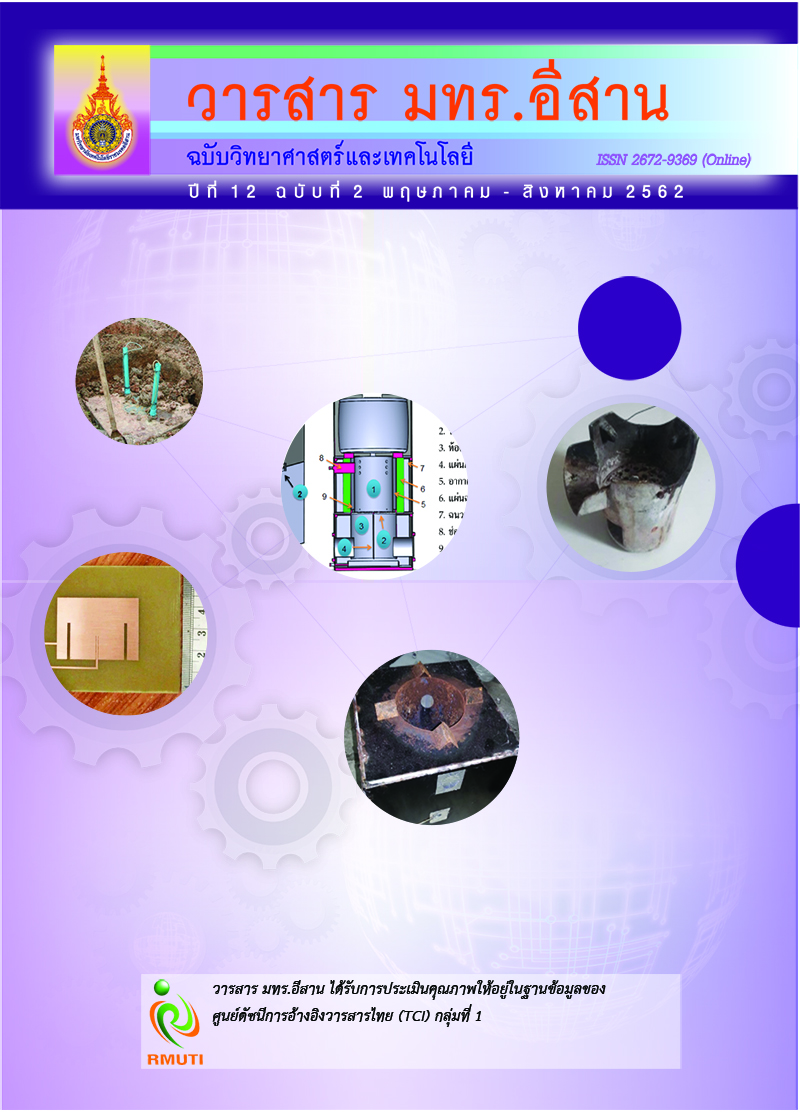Antioxidant Activity of Markhamia stipulata, Caryota maxima, Amphineurion marginatum Extracts and Cytotoxicity Effect on Human Dermal Fibroblast Cells
Main Article Content
Abstract
The aims of this study were to investigate antioxidant activity of crude extracts from three Thai medicinal plants (Markhamia stipulata, Caryota maxima and Amphineurion marginatum) and examine the cytotoxicity effect on human dermal fibroblast cells. The solvent used for extraction was methanol. The Folin-Ciocalteu analysis was used for the standard method of phenolic determination and the antioxidant was evaluated by 2,2-diphenyl-1-picrylhydrazyl scavenging capacity (DPPH) and ferric reducing antioxidant power (FRAP) assays. The results showed that the extract of Amphineurion marginatum had the highest total phenolic content of 106.34±2.40 mgGAE/g extract and the highest antioxidant capacity against DPPH with IC50 value of 11.15±0.01 mg/L. For the reducing capability of all extracts with FRAP method, they showed the reducing antioxidant activities and possessed concentration dependence by which Amphineurion marginatum extract revealed highest reducing ferric ability followed by Caryota maxima and Markhamia stipulata extracts, respectively. The cytotoxic assay of the extracts on human dermal fibroblast cells revealed that Caryota maxima extract showed did not have cytotoxic effects at concentrations of 62.5 - 1,000 mg/L. The extracts of Markhamia stipulata and Amphineurion marginatum were cytotoxic at concentration of 1,000 mg/L. The results suggested that Caryota maxima and Amphineurion marginatum extracts showed promising antioxidant effect but low cytotoxicity effect on human dermal fibroblast cells.
Article Details
References
[2] Papus, M. A. (1998). Antioxidants Status, Diet, Nutrition and Health. U.S.A: CRC Press
[3] Kaewamatawong, R. and Jounmunkong, Z. (2006). DPPH Free Radical Scavenging Activity and Total Phenol Compounds Content of Some Thai Medicinal Plant Extracts. Journal of Ubon Ratchathani university. Vol. 8, No. 2, pp. 76-88 (in Thai)
[4] Halee, A. and Rattanapun, B. (2017). Study of Antioxidant Effcacies of 15 Local Herbs. KMUTT Research and Development Journal. Vol. 40, No. 2, pp. 283-293 (in Thai)
[5] Ipek, S., Esra, K. A., Lutfun, N., and Satyajit, D. S. (2012). Wound Healing and Antioxidant Properties: Do They Coexist in Plants?. Free Radicals and Antioxidants. Vol. 2, Issue 2, pp. 1-7
[6] Yaraksa, N. (2019). Antibacterial Activity Against four Human Pathogenic Bacteria and Anti-inflammatory Activity Evaluated from Five Thai Medicinal Plants. SNRU Journal of
Science and Technology. Vol. 11, No. 1, pp. 1-10
[7] Singleton, V. L. and Rossi, J. A. (1965). Colorimetry of Total Phenolics with Phosphomolybdic-Phosphotungstic Acid Reagents. American Journal of Enology and Viticulture. Vol. 16,
pp. 144-158
[8] Kriengsak, T., Unaroj, B., Kevin, C., Luis, C-. Z., and David, H. B. (2006). Comparison of ABTS, DPPH, FRAP, and ORAC Assays Forestimating Antioxidant Activity from Guava Fruit Extracts. Journal of Food Composition and Analysis. Vol. 19, pp. 669-675. DOI: 10.1016/j.jfca.2006.01.003
[9] Manok, S. and Limcharoen, P. (2015). Investigating Antioxidant Activity by DPPH, ABTS and FRAP Assay and Total Phenolic Compounds of Herbal Extracts in Ya-Hom Thepphachit.
Advanced Science. Vol. 15, No. 1, pp. 106-117
[10] Sharma, N. K., Dey, S., and Prasad, R. (2007). In Vitro Antioxidant Potential Evaluation of Euphorbia hirta L. Pharmacologyonline. Vol. 1, pp. 91-98
[11] Satsue, S., Thapphasaraphong, S., and Damrongrungruang, T. (2014). Antioxidant and Collagen Stimulating Activities in Human Gingival Fibroblast Cell Culture of Plant Extracts.
Isan Journal of Pharmaceutical Sciences. Vol. 9, (Supplement), pp. 38-43 (in Thai)

